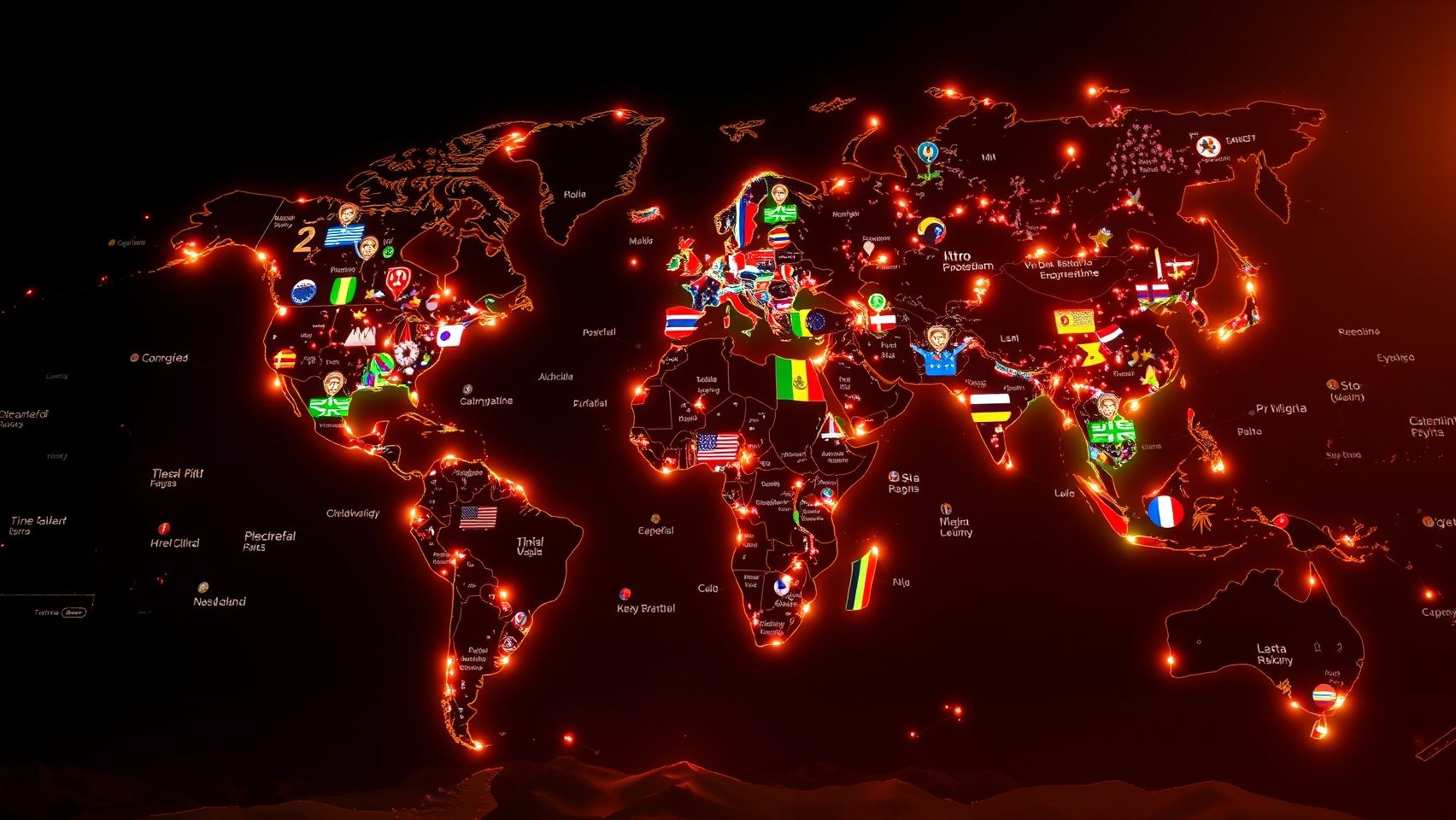International SEO Tips for Expanding Globally is essential for any business wanting to grow beyond local borders and reach customers worldwide. Optimizing your website and digital content for multiple countries and languages helps improve visibility in global search engines, bringing more targeted international traffic. This article shares effective strategies and practical tips to optimize your site for global audiences using the latest SEO tools and techniques. Learn how to do proper keyword research, localize content, use hreflang tags, and prioritize mobile optimization for each country. With examples relevant to Indian businesses like exporters, freelancers, and online sellers, this guide makes expanding globally easier and more successful.
Implementing international SEO right means better rankings, increased traffic, and higher conversions from multiple markets.
Understanding the Importance of International SEO
International SEO is not just translation; it’s about adapting your website and marketing to meet the language, culture, and search preferences of each country. It helps search engines know which version of your website to show in different regions, preventing content duplication and confusion. For Indian businesses looking to export or expand online, international SEO enables effective targeting and better competition against global brands.
Key Elements of International SEO
1. Research and Choose Target Markets Carefully
Before expanding, analyze where your products or services have demand. Use tools like Google Analytics to see international interest and Google Market Finder to discover new regions. Understanding competition and user behavior in each market helps you focus SEO efforts smartly.
2. Perform Localized Keyword Research
Keywords differ by region and language. Use country-specific keyword tools like SEMrush and Google Keyword Planner to find relevant terms. Don’t just translate keywords; consider local terms, synonyms, and cultural nuances to match user search intent well.
3. Create a Clear Website Architecture for Multiple Regions
Decide on a URL structure to separate versions clearly for different locales:
- Country code top-level domains (ccTLD) such as example.in, example.co.uk
- Subdomains like in.example.com or uk.example.com
- Subfolders such as example.com/in/ or example.com/uk/
4. Use hreflang Tags to Specify Language and Region
Hreflang tags tell search engines about the relationships between pages for different languages or countries. Properly implemented hreflang prevents duplicate content issues and delivers the right language version to users, improving user experience and SEO.
5. Localize Your Content Beyond Language
Localization means adapting currency, measurements, cultural references, and contact information to each target country. This builds trust and relevance for users, increasing engagement and conversions.
6. Optimize for Mobile and Local Browsing Behavior
Mobile-first design is critical as many countries rely heavily on mobile internet access. Ensure your website is responsive, quick-loading, and user-friendly on all devices to rank well and keep visitors engaged worldwide.
7. Build Local Backlinks and Partnerships
Quality backlinks from local websites and influencers boost your authority in each market. Collaborating with local businesses or directories improves your credibility with search engines.
8. Monitor and Audit International SEO Performance
Use analytics and Google Search Console to track traffic, rankings, and user behavior in each region. Regular audits help identify problems like hreflang mistakes, crawl errors, or content duplication so you can fix them promptly.
Practical Mini Guide for Beginners
- Identify top 2-3 countries to target based on demand and competition data.
- Use localized keyword tools to create language- and region-specific content.
- Setup clear URL structures using subfolders or subdomains for each country.
- Add hreflang tags to every page targeting multiple languages/regions.
- Make your site mobile-friendly and test on different devices.
- Reach out to local blogs or business websites for backlinks.
- Monitor Google Search Console for geo-targeting and indexing issues.
International SEO Tools and Resources
| Tool | Purpose |
|---|---|
| Google Analytics | Check international traffic and user behavior |
| Google Market Finder | Identify new international markets |
| Ahrefs / SEMrush | Localized keyword research and backlink analysis |
| Google Search Console | Monitor hreflang tag and indexing issues |
| Weglot / TranslatePress (for CMS) | Website translation and localization management |
Example for Indian Businesses
An Indian exporter of handicrafts creates a website with separate pages in English for the US market and French for Canada. They use subfolders example.com/us/ and example.com/ca/, add hreflang tags for language and country, and localize currency and contact details. They optimize mobile experience since many customers browse on phones. They also build partnerships with local boutiques and platforms to get authoritative backlinks. Using Google Analytics, they track traffic from each country and optimize content every month to improve rankings and sales globally.
How AI and Automation Help
Using AI tools like ChatGPT can help generate localized content and meta descriptions quickly in multiple languages without losing quality or cultural tone. Automation platforms like n8n can manage tasks such as updating hreflang tags or cross-linking regional pages seamlessly, saving time and avoiding errors.
Final thoughts from Niranjan Yamgar
Expanding globally with international SEO is a smart strategy to reach new customers and grow your business beyond India. By focusing on localization, proper architecture, and mobile optimization, you create a strong foundation for global success. Use modern SEO tools and automation to make your efforts efficient and scalable. Whether you are a freelancer, exporter, or online seller, international SEO opens doors to exciting new markets. For expert strategies and ongoing support, visit my site offering reliable and advanced digital marketing expertise at professional online marketing services. Keep innovating and connecting with the world!
For more detailed international SEO knowledge, you can visit trusted resources like Moz’s guide on hreflang implementation.
